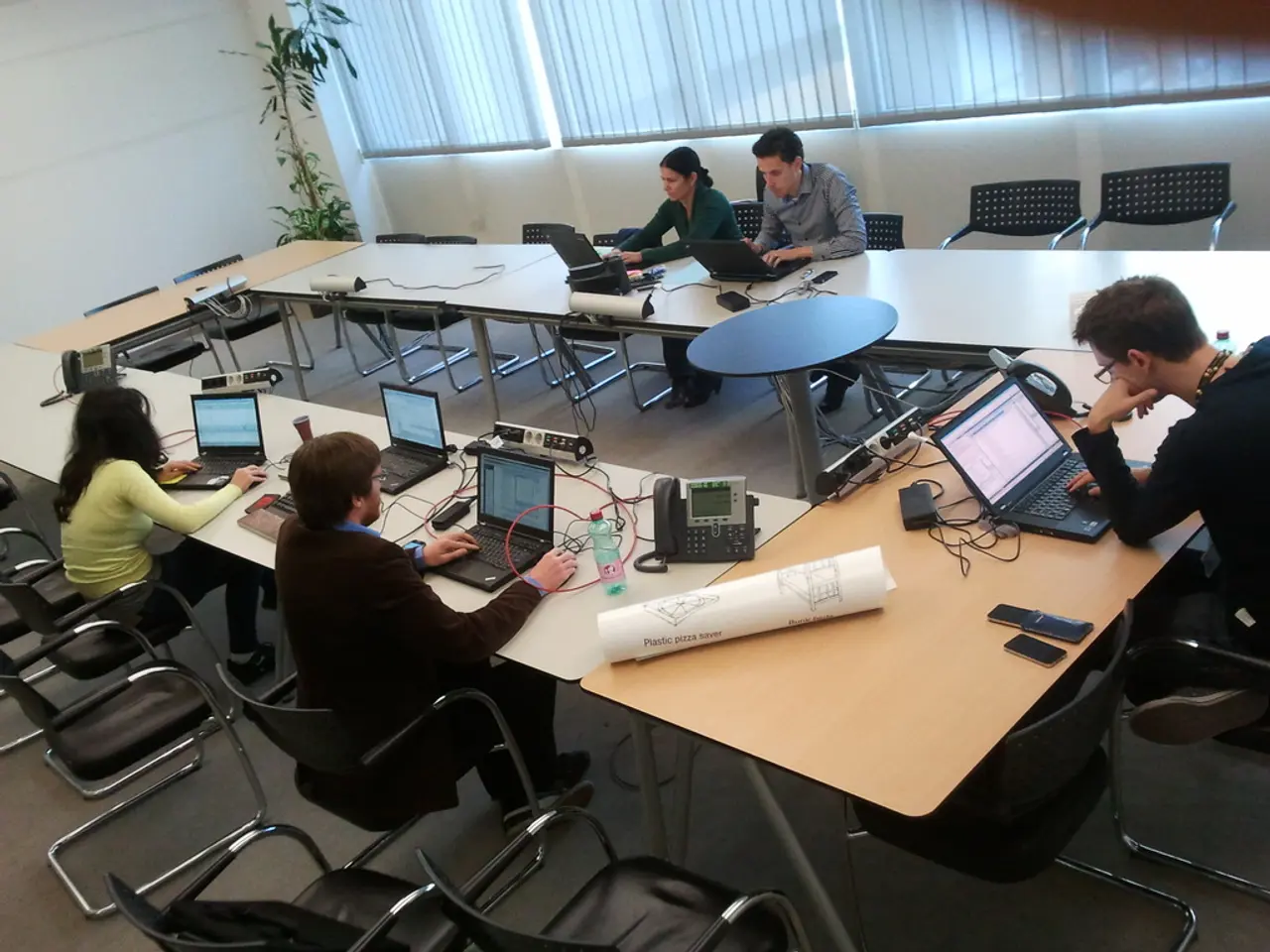Over a million employees have left their positions in the past year due to insufficient work flexibility, a warning to disregard hybrid work at one's own risk from an expert.
In today's dynamic job market, the hybrid work model is gaining traction as the future of work. This innovative approach combines the benefits of remote and in-office work, offering flexibility, improved work-life balance, and increased employee satisfaction.
The hybrid work model appeals to a wider talent pool, including those seeking flexibility in location and schedule. By offering autonomy and flexibility, businesses can attract top talent, giving them a competitive edge in hiring[1][2].
Key benefits of this model include:
- Flexibility and Autonomy: Employees can choose to work remotely or in-office based on their optimal productivity and personal needs, helping them balance work and life more effectively[1][2].
- Reduced Commute Stress and Costs: Employees save time and money by avoiding long commutes on remote days, leading to less burnout and higher job satisfaction[1][2][4].
- Stronger Social Connections and Company Culture: Hybrid work preserves important face-to-face interaction needed for mentoring, onboarding, and team cohesion, which supports employee engagement[3][5].
- Broader Talent Pool: Businesses can recruit candidates not limited by geography, enhancing access to diverse and highly skilled professionals[2][4].
- Increased Productivity and Wellbeing: By enabling employees to work in environments best suited to their style—quiet home offices or collaborative office spaces—hybrid work boosts performance and satisfaction[1][3].
Moreover, hybrid models reduce overhead costs, allowing businesses to invest savings in talent development and employee benefits, indirectly supporting retention and attraction[2][4].
However, not all employers share this positive outlook. Over a third of workers felt that news stories about mandatory office attendance were negatively affecting their wellbeing[6]. The ability to offer flexibility can be a significant differentiator in attracting top talent in a competitive job market[7].
Employees are increasingly prioritizing their work-life balance; a hybrid model allows them to tailor their work environment to their individual needs, enhancing job satisfaction and consequently productivity[8]. A hybrid workplace caters to the diverse needs of the workforce, driving engagement and innovation[9].
Flexibility is no longer just a desirable attribute; it is a fundamental aspect of the modern workplace[10]. A one-size-fits-all policy is never effective in meeting the diverse needs of employees[11]. Over one million UK workers left their jobs due to a lack of flexible working options in the past year[12].
Aman Parmar, Head of Marketing at Bizspace, offers insight into creating an environment that caters to diverse employee needs by offering a range of work options[13]. Embracing a hybrid model is essential for attracting and retaining talent in today's job market[14][15]. Organisations that stick to traditional models may struggle to attract and retain the best candidates due to lack of flexibility[16].
In conclusion, the hybrid work model balances flexibility with connection, making companies more attractive to top candidates and fostering a satisfied, productive workforce. This combination contributes to stronger recruitment outcomes and lower turnover[1][3][5]. The future of work lies in flexibility, collaboration, and the empowerment of the workforce.
- To appeal to a wider range of top talents, businesses should embrace the hybrid work model, as it offers an alluring combination of location and schedule flexibility that caters to employees seeking work-life balance.
- By integrating technology to facilitate seamless communication and collaboration, businesses can effectively maintain strong social connections and a positive company culture within the hybrid work model, further boosting employee satisfaction and productivity.




